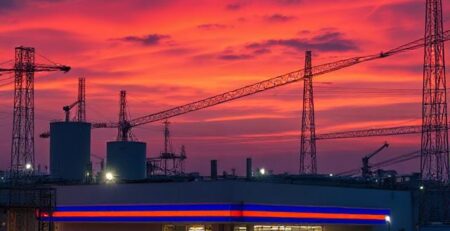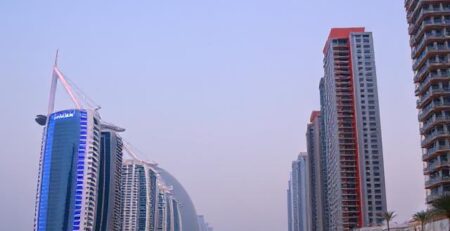Global Wealth Inequality: How the Top 1% Controls Nearly Half of All World Wealth
The Staggering Reality of Global Wealth Distribution
The world has reached an unprecedented level of wealth concentration that defies comprehension. The richest 1% of people own nearly 45% of all wealth, while 44% of humanity are living below the World Bank poverty line of $6.85 per day. This extreme polarization represents one of the most significant economic phenomena of our time, fundamentally reshaping global society and challenging traditional notions of economic progress.
The numbers are nothing short of astronomical. The world’s wealthiest 1% now controls approximately $54.4 trillion in assets, representing 43.4% of total global wealth. To put this in perspective, this single percentile of the population holds nearly half of everything valuable on Earth – from real estate and stocks to bonds and business investments. This concentration of wealth has created an economic chasm so vast that it challenges the very foundations of global economic stability.
The Elite Eight: Billionaires Who Own More Than Billions
At the apex of this wealth pyramid stands an exclusive group of eight individuals whose combined fortunes exceed the total wealth of the bottom 50% of the global population. These modern titans of industry – Elon Musk, Jeff Bezos, Bernard Arnault, Warren Buffett, Larry Ellison, Bill Gates, Mark Zuckerberg, and Steve Ballmer – collectively control over $1.23 trillion in wealth.
The fortunes of the world’s five richest people — Musk, Amazon founder Jeff Bezos, Oracle cofounder Larry Ellison, Bernard Arnault of luxury company LVMH, and investment guru Warren Buffett — have more than doubled since 2020. This rapid accumulation represents an acceleration of wealth concentration that has outpaced historical norms by extraordinary margins.
Elon Musk, the world’s richest individual, has built his fortune through revolutionary companies like Tesla and SpaceX, fundamentally disrupting multiple industries from automotive to space exploration. Tesla CEO Elon Musk is widely expected to be the first person to hit trillionaire status, marking a potential milestone in human economic history.
Jeff Bezos transformed global commerce through Amazon, creating an e-commerce empire that redefined retail and cloud computing. His wealth accumulation demonstrates how technological innovation can translate into unprecedented personal fortunes in the digital age.
Bernard Arnault has built his empire through luxury goods conglomerate LVMH, capitalizing on global demand for premium brands and positioning himself at the intersection of craftsmanship and capitalism.
The Mathematics of Extreme Inequality
The statistics surrounding global wealth inequality reveal patterns that challenge conventional economic understanding. The richest 1 percent grabbed nearly two-thirds of all new wealth worth $42 trillion created since 2020, almost twice as much money as the bottom 99 percent of the world’s population. This concentration means that for every dollar of new wealth created globally, approximately 67 cents flows to the top 1%.
This wealth accumulation pattern creates a self-reinforcing cycle. Wealthy individuals and families can invest their capital in appreciating assets, generating returns that compound over time. Meanwhile, those without significant capital remain dependent on wages and salaries, which typically grow more slowly than investment returns, perpetuating and widening the wealth gap.
The bottom 50% of the global population – representing over 4 billion people – collectively owns less wealth than these eight individuals. This comparison illustrates the extreme nature of current wealth distribution, where individual fortunes can exceed the combined economic resources of entire nations and billions of people.
Regional Variations in Wealth Concentration
Wealth inequality manifests differently across global regions, with some areas experiencing more extreme concentration than others. Among industrial nations, the United States is by far the most top-heavy, with much greater shares of national wealth and income going to the richest 1 percent than any other country.
In the first quarter of 2024, almost two-thirds percent of the total wealth in the United States was owned by the top 10 percent of earners. In comparison, the lowest 50 percent of earners only owned 2.5 percent of the total wealth. This distribution pattern reflects the extreme nature of American wealth concentration, where economic outcomes vary dramatically across income levels.
European nations generally exhibit more moderate wealth inequality, though significant disparities persist. The top 1% of earners in Europe take only 12% of the total income and the bottom 50% of earners take 22% of income. These figures suggest that European social democratic policies and tax structures may provide some moderating influence on wealth concentration.
The Technology Factor in Wealth Creation
The digital revolution has fundamentally transformed wealth creation mechanisms, enabling unprecedented accumulation speeds and scales. Technology companies can achieve massive valuations with relatively small workforces, allowing founders and early investors to capture enormous value from network effects and scalable digital platforms.
Mark Zuckerberg (40), Elon Musk (53), and Jeff Bezos (61) have seen their wealth skyrocket in just a few years, positioning them among the wealthiest individuals in the world. This trend is indicative of how quickly fortunes are being made in the tech industry.
The technology sector’s winner-take-all dynamics contribute to extreme wealth concentration. Platform businesses like Facebook, Amazon, and Google can dominate entire market segments, generating massive profits that flow primarily to shareholders and executives rather than being broadly distributed across society.
Artificial intelligence and automation technologies promise to further accelerate this trend, potentially creating even greater wealth concentration as capital owners capture the productivity gains from technological advancement while displaced workers struggle to adapt.
Historical Context and Unprecedented Levels
Current wealth inequality levels represent a return to patterns not seen since the Gilded Age of the late 19th and early 20th centuries. However, the absolute scale of modern wealth concentration far exceeds historical precedents due to the massive expansion of global economic output.
Inequality skyrocketed since the early 2000s: the share of income held by the top 10% has risen from 40% in 2000 to 58% in 2023, driven primarily by the top 1%, whose share grew from 15% to 23%, while the middle 40% saw a decline from 39% to 27%.
This acceleration suggests that contemporary economic structures may be fundamentally different from those of previous eras, potentially requiring new analytical frameworks and policy responses to address the challenges posed by extreme wealth concentration.
Economic Implications and Market Dynamics
Extreme wealth inequality creates significant macroeconomic implications that extend far beyond individual fortunes. When wealth concentrates in relatively few hands, it can reduce overall economic demand, as wealthy individuals typically save and invest higher proportions of their income compared to middle and lower-income populations who spend more of their earnings on consumption.
This concentration can create deflationary pressures and reduce economic velocity, as money becomes increasingly tied up in financial markets rather than circulating through the broader economy. Additionally, extreme wealth concentration can lead to asset price inflation, as wealthy individuals compete for limited premium assets, driving prices beyond the reach of ordinary citizens.
The phenomenon also affects financial market stability, as the investment decisions of ultra-wealthy individuals and families can significantly influence asset prices and market dynamics. When a small number of actors control vast capital pools, their investment strategies can create market volatility and concentration risks.
Political Influence and Democratic Implications
Extreme wealth concentration inevitably translates into political influence, raising fundamental questions about democratic governance and policy-making processes. 100 billionaire families spent a staggering $2.6 billion, or 16.5 percent of total political contributions in 2024. In 2000, billionaire election spending came to just $18 million to influence the election, or 0.6 percent of total political contributions.
This dramatic increase in political spending by ultra-wealthy individuals and families suggests a systematic shift in how political influence operates in democratic societies. When small groups of individuals can significantly influence electoral outcomes and policy decisions through financial contributions, it raises questions about whether democratic institutions can effectively represent broader public interests.
The concentration of wealth also enables the creation of private foundations, think tanks, and advocacy organizations that can shape public discourse and policy agendas in ways that may not align with majority preferences or societal needs.
Social Mobility and Opportunity Structures
Extreme wealth inequality fundamentally alters social mobility patterns and opportunity structures within society. When wealth becomes highly concentrated, it becomes increasingly difficult for individuals from middle and lower-income backgrounds to access the educational, social, and financial resources necessary for significant economic advancement.
The children of ultra-wealthy families inherit not just financial assets but also social networks, educational opportunities, and cultural capital that provide substantial advantages in economic competition. This creates semi-permanent class structures that can persist across multiple generations, reducing meritocratic competition and social dynamism.
Educational institutions, housing markets, and business networks increasingly stratify along wealth lines, creating parallel social systems that provide vastly different opportunities based on family economic status rather than individual merit or potential.
Global Development and Poverty Implications
The concentration of wealth in the hands of relatively few individuals occurs alongside persistent global poverty and underdevelopment. While the world’s wealthiest individuals accumulate unprecedented fortunes, billions of people continue to lack access to basic necessities like clean water, adequate nutrition, healthcare, and education.
This juxtaposition raises fundamental questions about resource allocation and global development priorities. The combined wealth of the eight richest individuals could theoretically fund massive development programs, infrastructure projects, and poverty alleviation initiatives that could transform the lives of hundreds of millions of people.
The persistence of extreme poverty alongside extreme wealth suggests that current economic systems may not be optimally configured to address basic human needs or promote inclusive development that benefits broader populations.
Future Projections and Trend Analysis
Current trends suggest that wealth concentration may continue to accelerate in coming years. Tesla CEO Elon Musk is widely expected to be the first person to hit trillionaire status, alongside Jensen Huang and Mark Zuckerberg, indicating that individual wealth accumulation may soon reach previously unimaginable levels.
The emergence of artificial intelligence, robotics, and other transformative technologies may further accelerate wealth concentration by enabling small numbers of individuals and companies to capture enormous value from technological productivity gains. As these technologies reduce the need for human labor in many sectors, the benefits may flow primarily to capital owners rather than being broadly distributed across society.
Climate change and resource scarcity may also influence future wealth distribution patterns, as those with sufficient capital can adapt to changing conditions while less affluent populations face greater vulnerabilities and displacement.
Potential Solutions and Policy Responses
Addressing extreme wealth inequality requires comprehensive policy approaches that can effectively redistribute resources while maintaining economic incentives for innovation and productivity. Progressive taxation systems, wealth taxes, and inheritance taxes represent traditional policy tools for addressing concentration.
International cooperation becomes increasingly important as wealthy individuals and corporations can move assets across borders to avoid national tax policies. Global minimum tax rates, enhanced financial transparency, and coordinated policy responses may be necessary to effectively address wealth concentration in an interconnected world economy.
Alternative economic models, such as universal basic income, public ownership of key assets, and cooperative business structures, may offer additional approaches to ensuring broader wealth distribution and economic security.
Conclusion: Navigating an Unequal Future
The current level of global wealth inequality represents one of the defining challenges of our era. With the top 1% controlling nearly half of all global wealth and eight individuals possessing more resources than 4 billion people combined, humanity faces unprecedented questions about economic justice, democratic governance, and sustainable development.
Understanding these patterns requires recognizing that current levels of inequality are not inevitable outcomes of natural economic processes but rather the result of specific policy choices, institutional structures, and technological developments that can potentially be modified through collective action and political will.
The path forward demands serious engagement with questions about how wealth should be distributed, what levels of inequality are sustainable or desirable, and how economic systems can be structured to promote both prosperity and justice for all members of society. The stakes could not be higher, as the decisions made today about wealth distribution and economic structure will fundamentally shape the future of human civilization.








